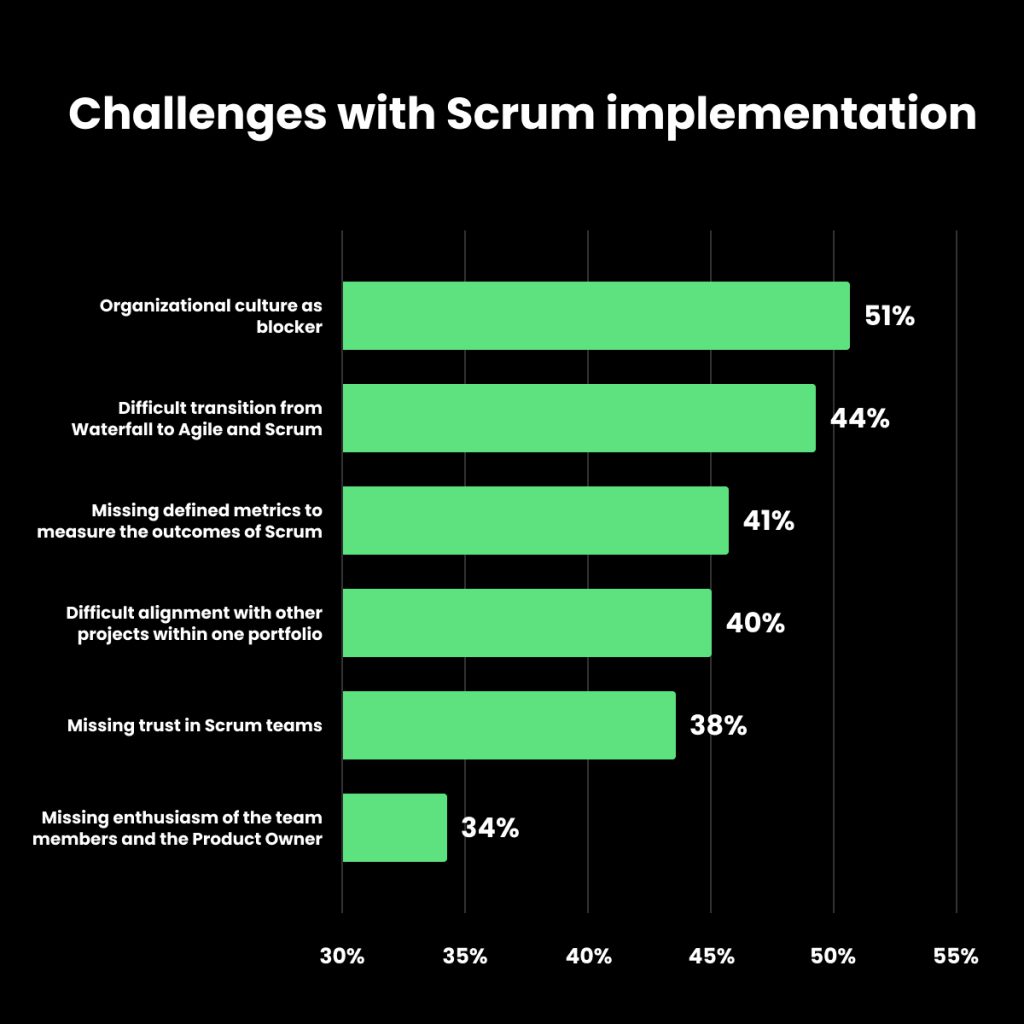Is Scrum still alive?
Publication date: 13.09.2023
Last updated: 22.09.2023

In recent years, Scrum has become the absolute standard of work for most software delivery companies worldwide. The job market has been filled with specialists in roles described in the Scrum Guide (2010), such as Scrum Master and Product Owner. For many, the roles defined in Scrum have become the foundation for their entire career path.
Scrum has become a panacea for all the ills and a solution to all the problems of the IT industry related to the efficiency of software delivery. Moreover, the ability to use Scrum terminology has become a form of ennoblement and confirmation of familiarity with the latest trends and best practices for digital project implementation.
What’s the situation today? After a huge wave of popularity, more skeptical opinions are emerging. From industry discussions, I have often heard:
- Using Scrum for projects with rigid timeframes and budgets often leads to problems. Scrum doesn’t provide any tools for the effective realization of such projects.
- Scrum shifts the responsibility for project management to the implementation team, which should be multifunctional, independent, and self-managing. Often in practice, this is impossible or simply ineffective.
- The methodology requires a very strict adherence to all rules and guidelines. To work in Scrum, the whole team must understand both theory and practice very well – this happens very rarely.
- Scrum involves many expensive meetings that overwhelm the team and reduce work efficiency.
- If you want to be more efficient, you need to create a process, not eliminate it. Scrum is based on ‘ceremonies’ – a creative name for a multitude of meetings: stand-ups, grooming, planning, retrospectives, etc. We spent more time talking than working.
- Scrum is a cancer that eats away at your team of developers. Scrum is not for developers; it’s another tool that allows managers to feel they have control.
Scrum is not the Holy Grail
For many years, the dominant project management methodology in IT was the waterfall approach. This linear, sequential approach was characterized by rigid phases and deadlines that did not always match the dynamic nature of IT projects. However, everything began to change with the advent of the Agile concept.
Agile, increasing flexibility and responsiveness to changes, initiated a real revolution in project management. The most popular representative of this philosophy became Scrum, a framework that introduces development cycles called sprints and emphasizes continually evolving, self-managing teamwork.
Nevertheless, Scrum is not a perfect tool. Although it has brought many benefits to many projects and organizations, it is not always the right solution. The main challenge in the effective implementation of Scrum is the assumption that it is a ready-made solution to any potential risks and problems related to the efficiency of project implementation.
Success in projects using Scrum depends on many factors – from the maturity of the team, understanding and acceptance of the Agile philosophy by all project participants, to the ability to flexibly adapt to changes. It’s just a tool that requires a range of other actions determining success. Scrum requires a very specific (agile) way of thinking, essential for effective operation. Therefore, it is not always a good idea for every team and project – and there’s nothing wrong with that!

Go hybrid
Scrum should not be treated as a market standard – but it is. Why? As it began to be associated with a high level of professionalism, standards, and quality, decision-makers do not pay attention to the fact that effective work in Scrum requires a very specific set of skills, knowledge, competencies, and again – a way of thinking. This has led to situations where teams choose Scrum without ensuring that there are favorable project circumstances.
But what if there are methods that might be more suitable for your team or your project? In recent years, there has been a noticeable (and justified) increase in interest in hybrid approaches, which combine elements of various project management methodologies, including Scrum and the traditional waterfall approach.
Hybrid management methods (water-scrum-fall) allow teams to use the best practices from different methodologies depending on the characteristics of the project, the team, and the organizational environment. For example, this might mean starting a project with a clearly defined scope in the planning phase (typical for waterfall), then applying typical Scrum sprints in the execution phase, and finally the traditional waterfall approach in the testing and implementation phase. And you know what? Considering the project circumstances, it might be the only right way.
It is important to remember that there isn’t one universal solution for all project management problems. The key is the ability to choose the right tool for the task and flexibility in adapting to changing circumstances. Instead of blindly following trends, it’s worth considering what is really appropriate for a given project and team.
At 300.codes, we follow the principle: don’t scrum me here. We select collaboration frameworks that are most effective, not standardized, templated, or popular. We simplify the most complex project environments, using the best practices, knowledge, and experience, combining various management methods. We define a process that allows maximizing work efficiency while responding to specific requirements or project circumstances. In this way, we ensure boutique quality of software delivery.
Summary
Scrum has brought many positives to the IT industry, but it is not a cure-all for every problem. It’s important for organizations and teams to be aware of its strengths and weaknesses, and to be able to adapt the methodology to their own needs. Instead of aiming for blind implementation of Scrum, it’s worth considering the use of hybrid approaches that combine the best of various methodologies. Ultimately, the key to success is continuous learning, adaptation, and the ability to choose the right strategy at the right time.



